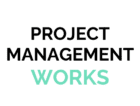When it comes to shaping a prosperous future of any organization, sound project management serves as the cornerstone. It aligns project goals with the strategic approach of an entire organization. It provides leadership, mission and vision to the teams, who get specific direction that is aimed at generating achievable outcomes. Guiding them about the objective, good project management encourages the team members to put the best of their efforts with a well-defined set of strategies. Eventually, it breeds excellence and enhances the level of efficiency while accelerating the chances of success.
Being a rookie project manager you might be anxious to begin working on the plan, and thinking about the consequences if the entire set of strategies fall flat. However, to help you prepare a successful management plan, we have summarized some basic guidelines below. The criteria to plan a project may vary depending upon requirements and demands of the project. However, with the basic guidance listed here, you will get an idea of preparing some basic groundwork to kick-start your project. Read on!
- Meet With Stakeholders And Build A Team
The foremost step in creating a robust plan is to be well-versed in the demands and requirements of the stakeholders. Stakeholders enhance the credibility of your efforts and enjoy an important position within an organization involved in the process of project planning. They play their part in helping you complete a successful project by investing their skills and services.
Also, remember to meet with the key stakeholders and project sponsors to determine the project scope, its deadline, and the budget. In addition, you need to build a strong motivated team to fulfill the requirements involved in the executing of your plan.
- Set Goals And Create A Baseline For The Project Scope
Project scope describes the need and purpose of the project. It guides the team members about the importance of each step performed. Project scope comprises an entire work breakdown structure underlining the process and techniques involved.
Moreover, after understanding the demands of your stakeholders, prioritize them along with setting specific targets. In this step, you must outline the objectives and the outcomes you hope to achieve. You need to prioritize every task that your project requires. If you find trouble in organizing the task list, you can seek help from Eisenhower Matrix.
 project management software” width=”618″ height=”412″ />
project management software” width=”618″ height=”412″ />
- Create Schedule and Define Deliverables
To streamline the process create a proper schedule, which can help you manage every task involved in the plan. In addition, define deliverables that you need to produce to fulfill the project’s requirements. What are the particular products that you have to prepare before the end of the project? Create a list and formulate a strategy for smooth and flawless completion of the project. Assign deadlines with each task to make sure the process proceeds without any delays. By creating a baseline and setting up a deadline can help you keep track of the progress.
- Create a RACI Chart
After defining deliverables and planning deadlines, you have to assign experts for each task, to handle different operations. A RACI chart will define the responsibilities of every employee to determine who will do what and how. It comprises four major specifications that are:
- Who’s Responsible- the one assigned to the task
- Who’s Accountable- the one who has the veto power
- Who should be consulted- the one responsible to approve and contribute
- Who should be informed or reported to – the one responsible for decision making
A RACI chart is the most effective tool used in project management; it helps managers know instantly which order is on its way to overdue. It helps to track every tiniest bit of the process, from production planning to resource management to employee scheduling.
- Risk Assessment
Every project has to come across some risks along its way to completion; you cannot run away from this fact. Your task may be subjected to various risks. However, what could save you from all the troubles and challenges is an efficient team of experts capable enough to handle and assess risk management. You need to develop a risk management strategy to eliminate the negative impacts.
Furthermore, risk assessments involve the What-if Scenario Analysis (WISA). According to this analysis, the experts can predict various possible outcomes along with defining solutions before they occur. For example, if you predict outcomes like delayed deliverables, exceeding of prescribed budget or issues of any sort related to available resources, a WISA strategy can help you find the best possible solutions to rectify the issue. The preparation of what-if analysis for all such situation enable the managers to handle any kind of issues by implementing the most appropriate solution right on time.
To Wrap Up
These are the five basic steps you should consider and follow in order to ensure that you handle the project professionally and have a foolproof project plan. You need to communicate with your stakeholders at the end of your project, to guide them about the important aspects present in the plan, while defining the expected duties of each stakeholder at the same time.



